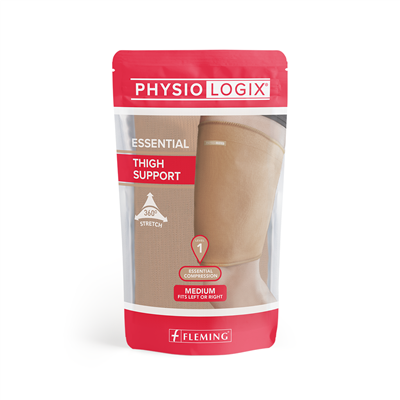Headlines
Recover like a Pro: 5 Simple Steps to Help Recover from a Pulled Hamstring
12 September 2022

The hamstring is made up of three muscles; the biceps femoris, semitendinosus, and semimembranosus. They all work together to assist you in bending your knee and extending your hip.

When one or more of these muscles are overstretched and begin to tear, it results in a hamstring strain, often known as a pulled hamstring. Mild hamstring strains can have little discomfort and a speed recovery or more severe cases can result in weeks of recovery or surgical repair may be required.
Skip to 5 Simple Steps to Help Recover from a Pulled Hamstring.
There are varying grades of hamstring injury:

What causes a hamstring strain?
When a muscle is overworked for example when jogging and your left is completely extended right before your foot hits the ground, a hamstring strain typically results. The following are a few of the most frequent causes of hamstring strains:
- Not fully warming up before exercise: Compared to muscles that are kept strong and flexible, tight muscles are significantly more likely to tear.
- Exerting yourself too much when exercising: Muscles that are weak are less able to withstand the strain of exercise, and muscles that are worn out lose some of their capacity to take in energy, increasing their risk of injury.
- A disparity in the size of the muscles in your legs: The muscles in the front of your legs, known as the quadriceps, are frequently bigger and stronger than your hamstring muscles. There can be a risk of a strain if your hamstrings are weaker than your other leg muscles.
- Poor technique: If you don't have appropriate running form, your hamstrings may be under more strain.
- Overexertion after an injury: Hamstrings require a lot of rest and time to heal completely. If you attempt to exercise after a strain, it increases your risk of re-injury.
5 Simple Steps to Help Recover from a Pulled Hamstring





How can you prevent a hamstring strain?
- Before exercise or vigourous physical activity, thoroughly warm-up: To warm-up your muscles, jog steadily for a minute or two, or perform some jumping jacks. After that, perform some dynamic stretching. After exercising, stretch your muscles gently with some static stretches, holding each stretch for at least 30 seconds.
- Get regular exercise and start a thorough stretching routine to prevent stress to your muscles after hard workouts.
- Slowly increase the length and intensity of your workouts. Make sure you only increase the distance you run or workout by no more than 10% each week.
- Listen to your body, stop exercising when you experience thigh pain: Give your hamstring some time to rest if you think you may have pulled a muscle. Don't resume your activity until your injured leg feels strong, you are pain-free, and you can move it as easily as the other leg.
Physiologix Thigh Supports for Hamstring Recovery
Follow Physiologix on social media for tips and recommendations on effective recovery and much more.







